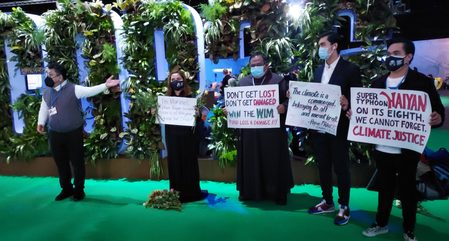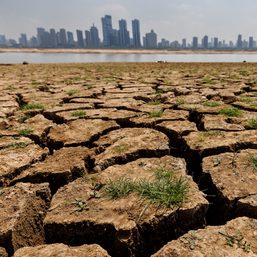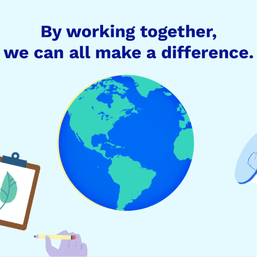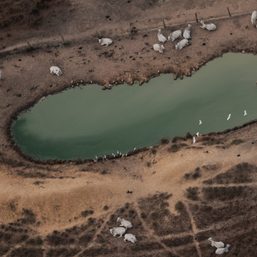SUMMARY
This is AI generated summarization, which may have errors. For context, always refer to the full article.
![[ANALYSIS] After Glasgow: What’s next for climate?](https://www.rappler.com/tachyon/2021/12/cop26.jpg)
The 26th Conference of the Parties (COP26) was finally held in Glasgow as pressure and expectations ran high following a one-year delay due to the COVID-19 pandemic. Negotiators arrived in Scotland to modify a sequence of technical decisions to finalize the Paris Agreement rulebook, including new future emissions reporting rules as well as the heated Article 6 on carbon markets.
The UN’s two-week climate conference was viewed as a critical time for global commitments and action especially after developed countries fell short of raising the $100-billion annual climate funding that was promised to vulnerable countries – not to mention the harrowing backdrop of the gap staying below 1.5C global temperatures.
The Manila Observatory was well-represented in Glasgow with three of the four authors of this article (Dean La Viña monitored developments from Manila) attending COP26 in its entirety.
Failures, gains in the Glasgow Climate Pact
The COP itself found difficulty in trying to mitigate the divide between the bureaucracy of the negotiations and the passionate voices calling for immediate climate justice. The UK Presidency came into it setting their expectations to “keep 1.5C alive,” which can limit the devastating impacts of climate change if achieved.
What materialized was the “Glasgow Climate Pact,” which was appreciated for its commitment to both double adaptation finance as well as beseeching countries to present more ambitious climate pledges before COP27. However, the conference still failed to provide developing nations with the money for loss and damage, financing the response to the inevitable impacts of climate change.
In 2009, the developing nations pledged to annually drum up $100 billion in climate finance for vulnerable countries. Unfortunately, current climate finance flows are falling short of the pledge. Considering it’s the largest and most contentious issue in climate politics, many developing states were left in a disappointed limbo. This provision of resources could make or break plans in poorer countries to cut emissions and protect their resources from climate impacts.
A year after the deadline, the delivery plan for the pledge was released before COP26 and it detailed that the target wouldn’t be met until 2023. The main concern among the subscribed countries is that this failure to deliver could cripple the trust between the nations – not to mention their international reputations.
There is a bit of optimism in this though, since the loss and damage facility is guaranteed to come, just at a slower pace than anticipated. It will most probably come in a few years unlike the Green Climate Fund (GCF), which took 16 COPs to arrive.
Not all that came out of Glasgow was dim; there was also the first COP decision to explicitly target action opposed to fossil fuels. There was a call for a phase-down of unabated coal, and phaseout of what was considered “inefficient” fossil fuel subsidies. The 11th hour intervention from the Indian environment minister Bhupender Yadav saw the language around coal weakened in the final text. The call to phase-down, however, was nevertheless refreshing and unprecedented in the UN climate processes. Some experts are not too concerned with the wording, considering the fossil fuel subsidies that were targeted in the text were agreed to by almost 200 governments.
The PH at COP26
Much of the spirit of the climate change conference is in keeping governments accountable. In this sense, some view the PH delegation’s general performance as satisfactory. Finance Secretary Carlos Dominguez led a 19-person delegation that was very much focused on climate finance. Only two of those 19 members however had experience in UN climate negotiations. Much to the dismay of civil society groups, there did not seem to be representation from the Climate Change Commission, activists, or advocates. What’s more is the PH delegation definitely did not meaningfully engage with the other non-government delegates – not even responding to invitations for dialogue.
Dominguez did however deliver quite the country statement, promising to be a climate leader among those states vulnerable to climate change. It was also noted that Director Albert Magalang and Energy Undersecretary Wimpy Fuentebella put forward interventions in the critical moments of the negotiations.
Perhaps a key declaration the PH made at COP was joining the launch of the Asian Development Bank’s (ADB) Energy Transition Mechanism (ETM) facility, which is a blended finance vehicle that is supposed to help usher the country’s transition to renewable energy. Under the facility, coal-fired plants would slowly be retired as the ETM can provide funding for the rehabilitation of the Agus-Pulangi hydropower plant in Bukidnon, in which the ADB has initiated a two-year feasibility study.
The PH was also one of 40 countries that endorsed the Global Coal to Clean Power Transition Statement, but strangely it was the only one to qualify its endorsement, with Energy Secretary Alfonso Cusi saying that the government will not endorse one of the clauses (clause 3) which stipulates the ceasing of new construction of coal-fired projects as well as the direct government support for unabated international coal generation.
Water and climate
The effects of climate change are primarily manifested in water. Nine out of 10 natural disasters are water-related. Droughts and flooding affect food security, and cause disruptions in water service delivery. Rising sea levels result in saline water intrusion of groundwater sources, rendering some wells, especially in coastal communities, unusable. Increasing demand coupled with an unstable supply also result in conflict, wars, and displacement. Yet, water is rarely at the forefront of climate conversation. COP26 however strived to change that.
For the first time in 26 years, a Water Pavilion was set up to showcase the interrelationship of water and climate, and how water can also be a powerful ally in climate adaptation and building resilience. At the center of many discussions in the pavilion were nature-based solutions. Restoring and protecting watersheds, wetlands, peatlands, and river basins mean carbon sequestration, and at the same time increased water quality and supply.
The conference also saw the launch of various water-related coalitions and commitments such as the Water and Adaptation Coalition that sought to “address the crisis of both water scarcity and water-related hazards due to rising temperatures,” and the Glasgow Fairwater Footprint Declaration that cemented global commitment to equitably use water resources, and “drive universal access to safe water, toilets, and handwashing facilities.”
By treating water not merely as a sector, but a unifying element in climate action, solutions that benefit both nature and people, and build more resilient ecosystems and communities can be made possible.
![[ANALYSIS] After Glasgow: What’s next for climate?](https://img.youtube.com/vi/8simuy6lHaE/sddefault.jpg)
Higher ambition needed
This COP, a decision was made on the common timeframes, which came as a relief especially to developing states who have been pushing forward for shorter time frames in which countries can provide higher ambition.
The Enhanced Transparency Framework negotiations were also concluded, which allowed flexibility for developing countries to report in light of their capacities. Hopefully, such a decision will allow countries to foster solidarity and trust.
The Parties further approved the registries for Nationally Determined Contributions (NDCs) and Adaptation communication, which will provide information towards the global stocktake that will take place starting 2023. The global stocktake is fundamental as it is a process which aim is to assess collective progress along thematic lines: mitigation, adaptation, and finance flows and means of implementation and support, and will inform countries on how to ensure higher ambition as they update their NDCs locally and strengthen cooperative climate action on an international level.
A key outcome of Glasgow was the conclusion of the Paris Rulebook, with parties agreeing on the fundamentals on carbon markets, which should clear the way for the Paris Agreement’s implementations on Article 6 which sets up the carbon crediting mechanism for governments to utilize under the NDC system.
In conclusion, it does seem that the Glasgow Climate Pact meets the expectations of the bare minimum. The deciding countries have made enough progress to go back to the drawing board and hopefully return next year in Sharm el Sheikh, Egypt for COP27 with stronger commitments to reduce emissions and more money for developing countries. However, as always, it is what happens in between and after COPs that matters most. – Rappler.com
Tony La Viña, Tonichi Regalado, Joy Reyes are affiliated with the Manila Observatory, while Jenica Dizon is the country director for Waves for Water.
Add a comment
How does this make you feel?
![[OPINION] Our experience in the Glasgow climate conference](https://www.rappler.com/tachyon/2021/12/TL-Glasgow-experience-December-2-2021.jpeg?fit=449%2C449)



![[OPINION] Momentum for climate justice](https://www.rappler.com/tachyon/2022/01/TL-Odette-Climate-Justice-January-21-2022-Part-2.jpg?resize=257%2C257&crop=82px%2C0px%2C720px%2C720px)

There are no comments yet. Add your comment to start the conversation.